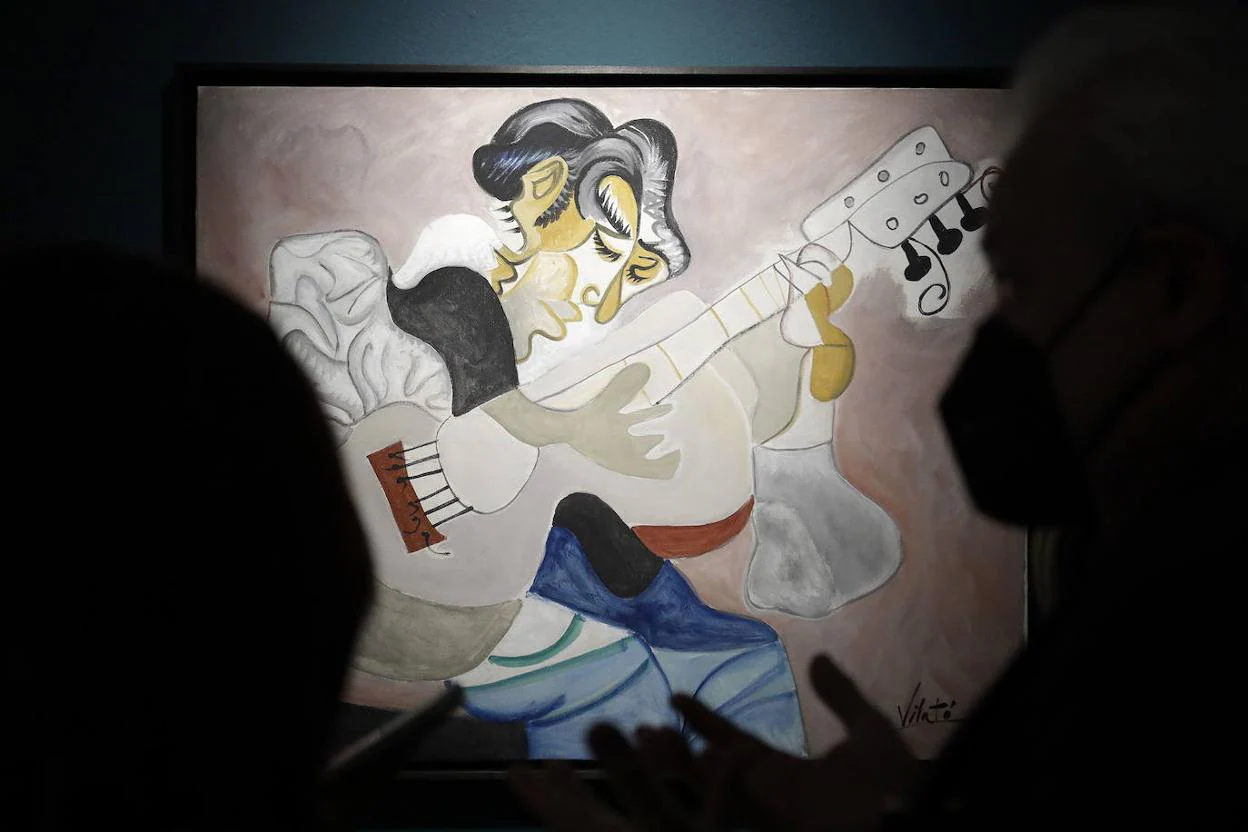Javier Vilató: The nephew who escaped his uncle's shadow
The son of Picasso' sister Loli gained national and international recognition as an artist and sculptor. His work is now on display in his uncle's house in Malaga
REGINA SOTORRÍO
Friday, 12 November 2021, 10:58
The temporary exhibition Vilató. 100 Obras para un Centenario, on display in the Casa Natal in Plaza de la Merced in Malaga, offers a complete retrospective of artist Javier Vilató. From the first piece he exhibited in public until his last, the museum is the epicentre of a tribute that is spread over five different venues, three of which are in Malaga province.
Javier Vilató grew up in his grandmother's house surrounded by the works of his uncle, Pablo Ruiz Picasso. It was his uncle who rescued him from the French concentration camp where he ended up after the Republican defeat.
He introduced him to the artistic circles of Paris, showed him the world of the Montmartre workshops, taught him the technique of engraving and together they even signed four-handed paintings such as Naturaleza Muerta (1947). But Javier Vilató was much more than the nephew of the great Pablo Picasso. The artist knew how to step out of the long shadow of the universal genius and build his own original niche, a unique language that is now on view to the public in the Casa Natal on the hundredth anniversary of his birth.
"It is complicated to be a 'Picasso'", admitted Vilató's son Xavier Vilató, in a tour of the exhibition that he has curated and where questions about his great-uncle follow one after the other. He had the enormous "luck" to be nourished by the rich Picasso universe, but "in the eyes of others" there are always comparisons. However, Vilató achieved a style of his own that began to take on a new dimension in the 1950s.
His work is a reflection of his life. Along with the piece from his adolescence, there are two paintings from 1939 with a clear cubist inspiration, the first avant-garde, which he discovered when Picasso freed him from the concentration camp and he spent some time in a hotel where Frida Khalo was also staying.
When he returned to Barcelona in his early twenties, he joined a group of painters looking for a place to exhibit their work and his art became neoclassical, with portraits like the one of his sister, Muchacha de las violetas.
His style changes again when he receives a grant to go to Paris and exhibits for the first time pieces like Composition (1946).
In the 50s is when Vilató "built his language". He said that he was born in a world where cubism already existed, so his contribution was to "give cubism curves," explained his son. It is post-cubism. In contrast to the abstraction with which some artists responded to that first avant-garde, in Vilató the figure continues to have an enormous presence in his work.
The forms are rounded and elongated in strange but recognisable compositions. In the fantastic La Fuite avec le Chien, he uses a pointillist technique to portray a girl running barefoot with her dog.
The women in his life become his inspiration. First Germaine, Xavier's mother, and then Marianne who visited the exhibition to see herself on the walls of the gallery.
"I'm used to it," says his widow in front of several of his portraits (Portrait aux couettes, La blouse blanche, La Cheminée). Although she confesses that she never posed for him: "It was in his head."
His Andalusian roots are also present in striking works such as Guitarrista. Anything that "smelled of Spain" appealed to those who had been forced to live far from it. Vilató, who maintained his link with Barcelona, was Picasso's Spanish connection in France and brought him news of his family and wine from Malaga. "Their relationship was very intense."
Françoise Gilot (the French artist who had a ten-year relationship with Picasso) used to tell me that when she was with Pablo, the person closest to him was my father," recalls Xavier.
A selection of Vilatós works can also be seen in the Pompidou in Malaga and the Museo del Grabado Español Contemporáneo in Marbella.
The exhibition will remain at the Casa Natal Picasso Malaga until 20 March 2022 and closes a circle that began when Vilató and his family travelled to Malaga in the late 1990s to visit the Casa Natal and its director Eugenio Chicano. Back then it was the only place that kept "the flame of Picasso" alive. Decades later, Vilató has returned to the museum.
